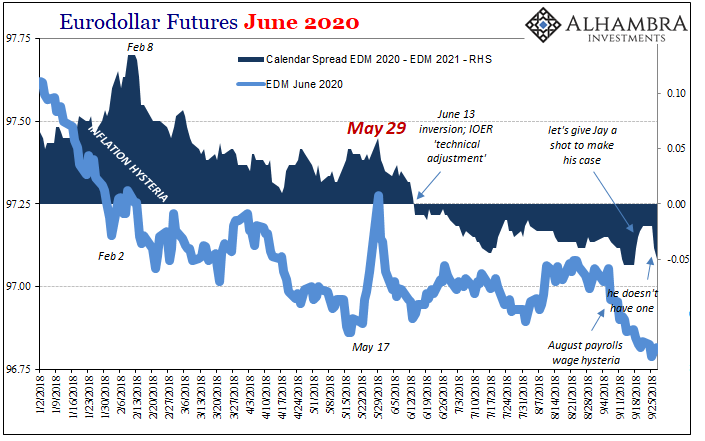The Very (Very, Very) Big Things
Somehow, the scale of May 29 keeps getting bigger. I should clarify, meaning that the very few data series that can pick up on what happened that day have had trouble picking up on exactly what happened that day. It was, to put it simply, a global collateral call of some undetermined magnitude. We know it was substantial by the earthquake across markets in the real world.
But how substantial?


Apparently, it’s quite hard to figure. Most if not all the data we see is predicated on sampling. Whichever agency or outfit surveys a subset of the population in the area they wish to study, hoping that in the end, it is a large enough sample to pass statistical testing for significance (as well as a whole bunch of other mathematical assignments, such as occasionally heteroskedasticity).
These sample techniques are by nature biased by the past; the data we use to construct them are taken from what really happened before. Thus, when confronted by a large break, there is a tendency to “smooth” the disjunction at least until more data comes in (larger samples).
For May 29, the Treasury Department’s TIC data is practically the only series capable of detecting the seismic collateral shift – just as it did in eurodollar spaces in 2008 when MBS were suddenly repudiated all at once launching the mad deflationary scramble for UST collateral. The first run of estimates, sure enough, perceived something monstrous even if we can’t know from it exactly what the monster was (“other” forms of securities provided by “other” financial institutions around the world).
With the update for August now in hand, released yesterday, the aftershock in June 2018 keeps getting larger. In other words, it was always this large but now we have a better idea (hopefully) the actual scale. I’ve placed the charts below in order from the oldest data to the newest, the third being the latest estimates.



Whenever you find such a big break like this you immediately suspect data discontinuity; a hypothetical example, the Treasury Department may not have surveyed a true sample from every class of financial institution and therefore starting in June they updated their surveys to include new membership. If they don’t go back and recalculate past data, and in many cases, such as Z1, they don’t, it shows up as a dislocation. The old data stops, the new data begins.
Here, however, there is no sign this is the case (and there are no other breaks except the one right here). The two subsequent upward revisions pretty much show us that it’s not, rather the thing was so massive the Treasury data was/is having trouble deciphering the levels for it.

Why do we care almost five months later? To oversimplify, big things often to lead to bigger things. If we suspect by a broad survey of data and anecdotes that Reflation #3 is dead and buried, which is no small matter, then getting May 29 right helps us decide the question and only then can we begin to think about what that means.
It stands is stark, now starker, contrast to everything you see in the mainstream. According to all the “experts”, the economy is booming and there couldn’t possibly be a global monetary irregularity of this magnitude (what did Yellen say recently, something no financial crisis in our lifetimes?) Yet, here it is.
It can be a logical fallacy to claim that if they get the small things wrong then they must be wrong on the big things. There’s much less danger of committing the same one if they don’t even recognize the very, very, very big things. If Ben Bernanke were still Chairman, he would no doubt be in front Congress right now assuring us that collateral is contained.
Disclaimer: All data and information provided on this site is strictly the author’s opinion and does not constitute any financial, legal or other type of advice. GradMoney, nor Jennifer N. ...
more


